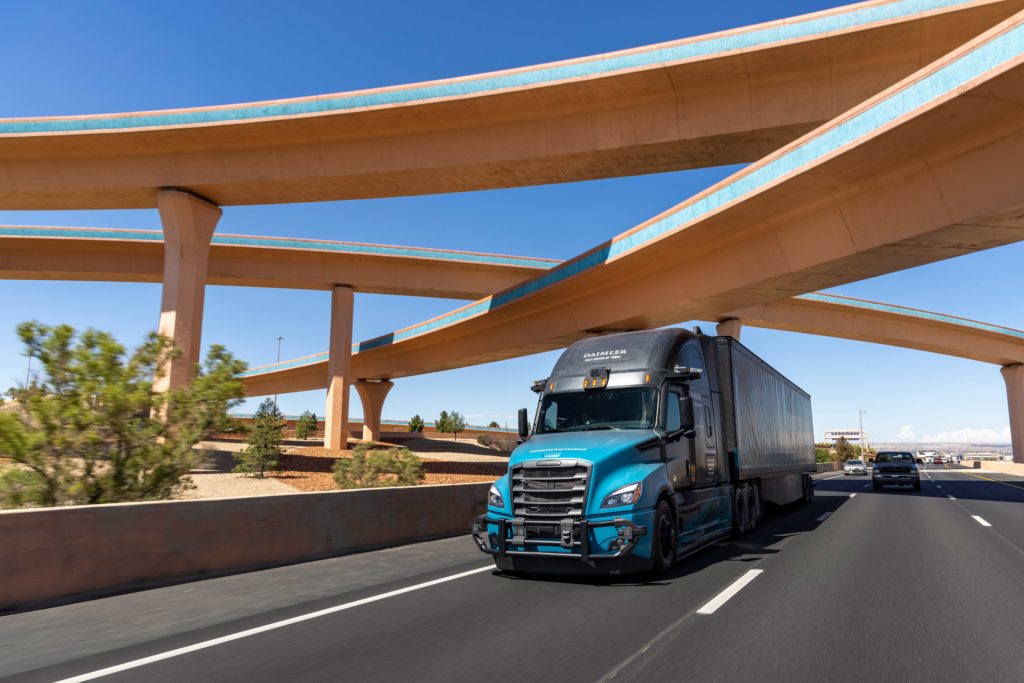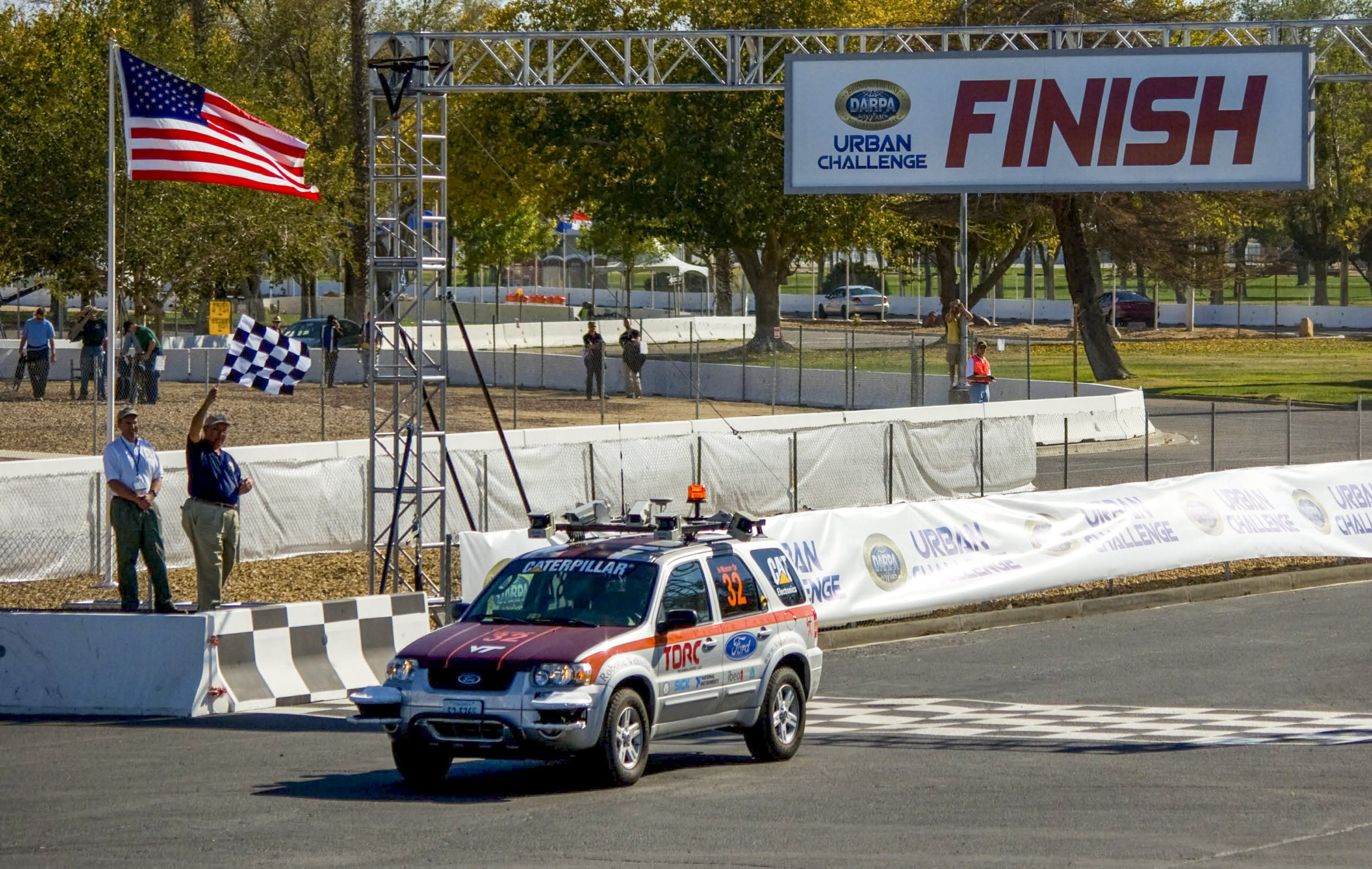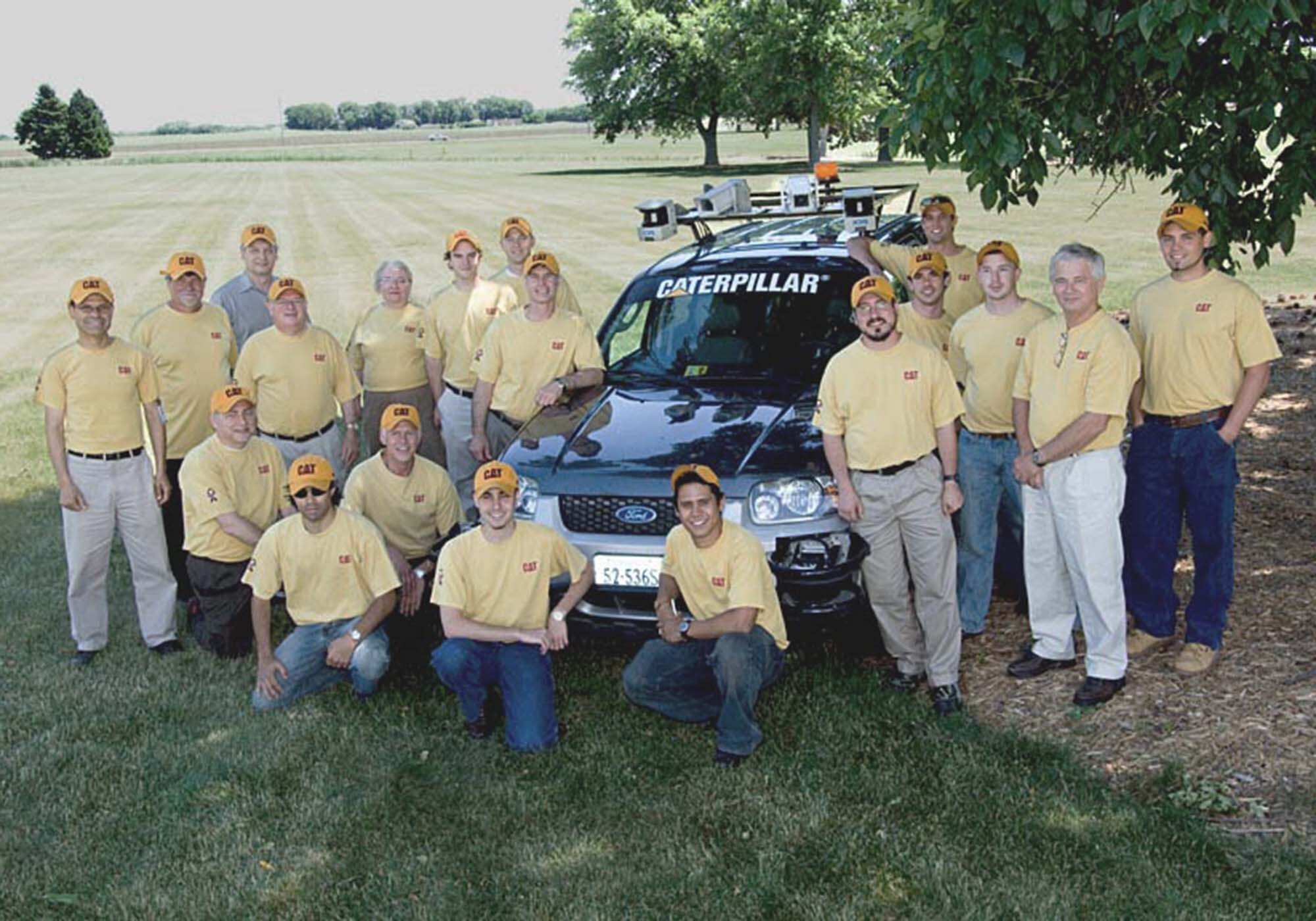Team VictorTango placed third in the DARPA Challenge and immediately began working with the Department of Defense (DoD) – creating autonomous solutions to minimize death and injury for service members. From there, Torc developed its technology for a number of industries and applications, but DARPA is widely acknowledged as the company’s launching point.
Fourteen years later, both the world and autonomous vehicle technology have changed. Torc has transitioned to a new challenge: autonomous fleet transportation and helping to provide solutions to problems like trucker shortages, massive supply chain delays, and safety on U.S. highways.
Reflecting on DARPA’s Legacy
Several members of the original VictorTango team are still at Torc today. Through the years, they have continued to develop their skills and carried on the lessons learned from the DARPA challenges.
“The most impactful part of the DARPA Urban Challenge for me was the strong focus, drive, and camaraderie of our team. Our team had been working day and night for months on end to get us to this point. Even though exhaustion or other stress may have been expected by someone observing from the outside, our team’s creativity and focus were as sharp as ever all the way to the starting flag. And finally, once Odin passed the finish line, the checkered flag was waved, and we honked the horn twice. The full team collectively took a huge sigh of relief and celebrated not just our end accomplishment but the journey we took to get there. This memory, and many similar ones that followed, immediately come to mind when I think about Torc’s winning team identity.”
– David Van Covern
“The most important aspect of the DARPA Urban Challenge for me was seeing what a dedicated team of Torc employees, Virginia Tech grad, and undergrad students could accomplish when our vehicle crossed the finish line. The Urban Challenge was a race against limited development time and resources to be ready for the event date, and the team did a great job of working together to focus on the key challenges to put a self-driving vehicle on the road.”
– Andrew Bacha
“We were fairly confident, but also going against many big names in the robotics industry and some teams that had a lot more resources than us. We were prepared and knew we could handle the required functionality, but there were also many unknowns. It was a new environment that would have more traffic, some of which included other robotic competitors. It was kind of like sending your child out in the world and then waiting to see what was going to happen. Did we prepare them enough? Do they have the right tools to handle whatever they might see out in the world?”
– Cheryl Bauman
Continuing the Challenge

Although Torc has since grown from a small team in Blacksburg, VA to a global workforce with multiple locations, the team’s success at the DARPA Urban Challenge continues to have a dramatic impact on how we approach the development and commercialization of our autonomous freight trucks. The following lessons learned continue to be pillars of Torc’s development.
Purpose-driven development
The Urban Challenge was an attempt to pull autonomous vehicle development from the world of academia to tackle real-world challenges. It worked. Torc approached subsequent projects by developing business cases that catered to specific industry needs. Over the years, Torc has successfully developed an array of autonomous technology applications that solve real-world problems while remaining committed to its mission of saving lives.
Keeping it Simple
Torc is tackling the complexities of innovating the freight network by solving the most straightforward challenges first. The team learned this from the DARPA challenges and the subsequent work with the DoD and Caterpillar.
Torc currently takes a pure-play approach to commercializing self-driving trucks. Torc is singularly focused on one OEM (Daimler), one application (long-haul freight), and one region (U.S.). To start, Torc is establishing lanes in the Southwest corridor of the U.S. that will be used specifically for long-haul trucking applications. This approach allows the team to create a solution for the use-cases with the most need and opportunity, then scale more broadly.
Strong Partnerships
“We work with the subject matter experts in each of their respective fields to get a well-rounded product. We’ve found success in creating technology based on customer needs. Now, we’re working with Daimler Truck, the number one manufacturer of semi-trucks, to complement our self-driving system and tapping into their century of expertise in the trucking industry as a catalyst for smart product development.”
– Ben Hastings, Chief Technology Officer
Driven by a Vision
The DARPA Urban Challenge may be in the rearview mirror, but you can still see its influence on the work ethic, values, and approach that Torc’rs continue to uphold today. Torc’s mission is still saving lives, and its goal with autonomous trucking is to help make roads safer and create a better quality of life. The team is still made up of diverse people driven by a shared desire to push technology further. Its core values of Hungry, Humble, and People Smart helped it succeed at the DARPA Urban Challenge, and they continue to guide Torc’s winning team to learn together, collaborate, and be open-minded. And it all began at DARPA with a group of visionaries who challenged themselves to make their engineering dreams a reality.



